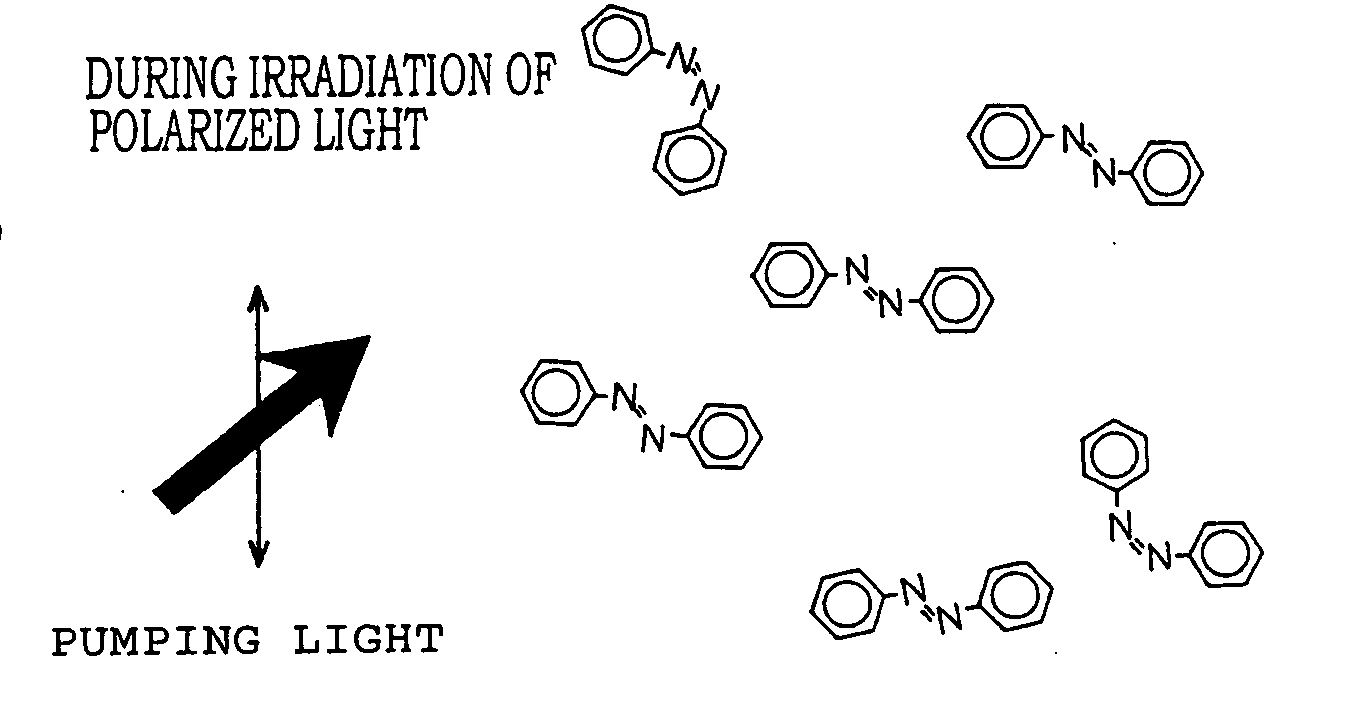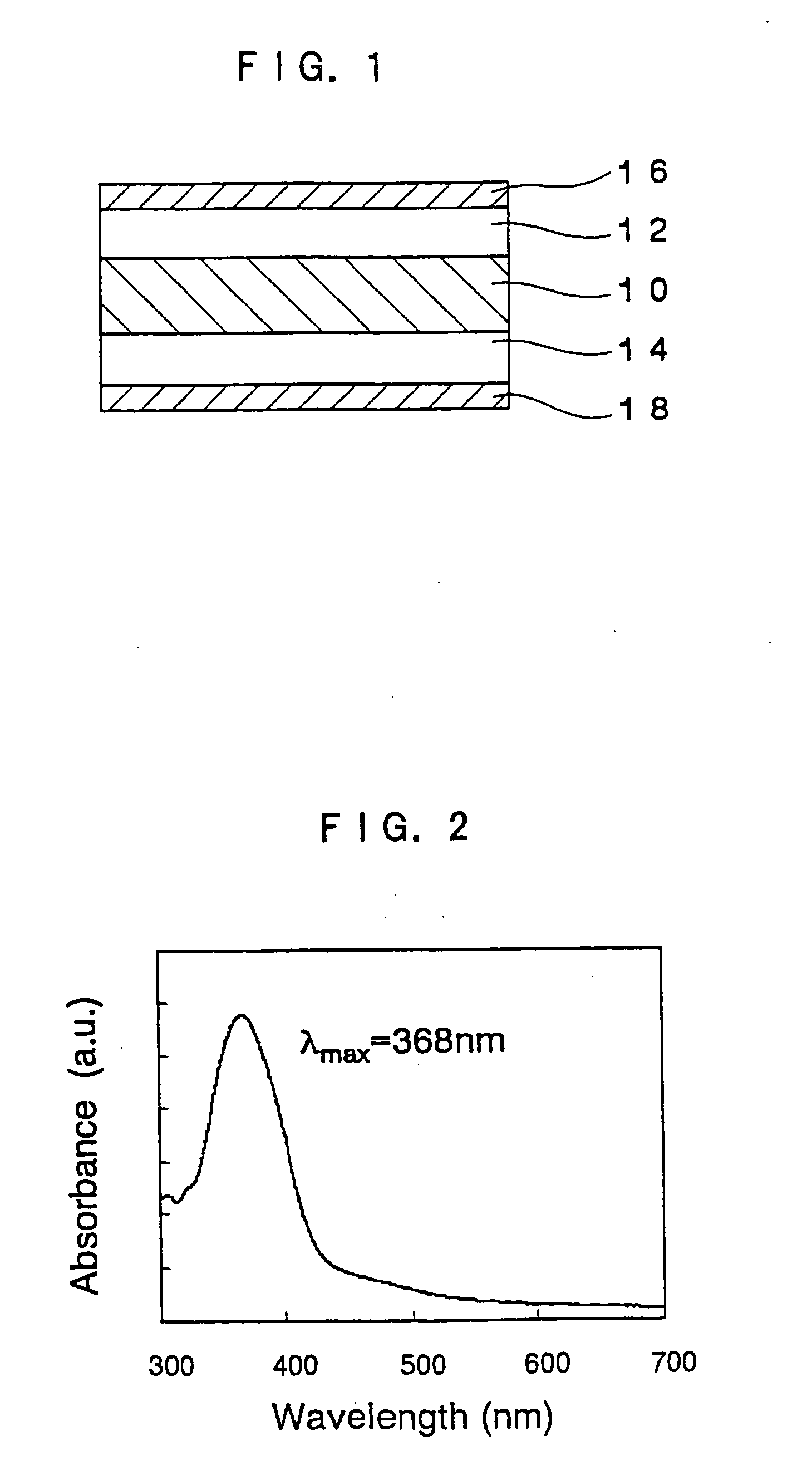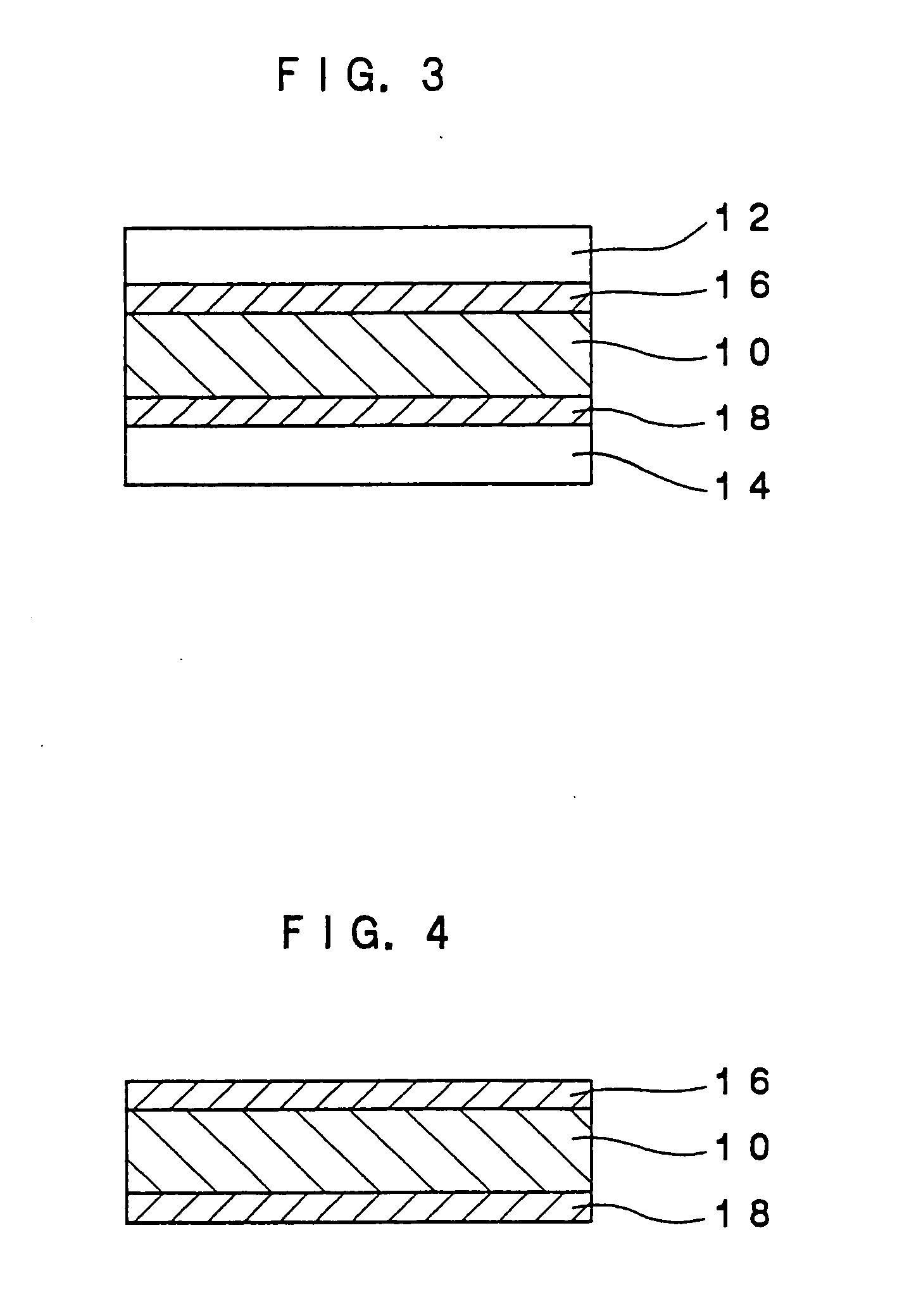Holographic recording medium and recording method
- Summary
- Abstract
- Description
- Claims
- Application Information
AI Technical Summary
Benefits of technology
Problems solved by technology
Method used
Image
Examples
first embodiment
[0031] The holographic recording medium of a first embodiment, as shown in FIG. 1, includes: an optical recording layer 10 capable of recording a hologram; a pair of transparent substrates 12 and 14 sandwiching the optical recording layer 10; and optical filter layers 16 and 18, formed respectively on the surfaces of the transparent substrates 12 and 14. The optical filter layers 16 and 18 allows transmission of a predetermined wavelength of a writing light and a predetermined wavelength of a reading light, while blocking light having a wavelength shorter than the wavelength of the writing light.
[0032] A hologram is recorded on the holographic recording medium by inducing optical anisotropy by irradiating the writing light, having a predetermined wavelength, and comprising a signal beam and reference beam onto the optical recording layer 10. The recorded hologram is reproduced by irradiating the reading light of a predetermined wavelength onto the optical recording layer 10. Since ...
second embodiment
[0058] The holographic recording medium according to the present embodiment is a laminate comprising an optical recording layer 10 capable of recording a hologram, and a pair of filter substrates 20 and 22 sandwiching the optical recording layer 10 (See FIG. 5). The same reference numerals are given to the same components as in the holographic recording medium in the first embodiment, and descriptions thereof will be omitted.
[0059] The filter substrates 20 and 22 have a filter function for allowing transmission of the writing light and reading light, while blocking a light having a shorter wavelength than the wavelength of the writing light. The filter substrates 20 and 22 preferably also have a filter function for blocking light having a longer wavelength than the wavelength of the writing light, from the view point of reducing the light absorption ratio of the optical recording layer.
[0060] Plastic substrates containing colorants dissolved or dispersed therein may also be used a...
third embodiment
[0065] The holographic recording medium according to the present embodiment comprises, as shown in FIG. 6, a laminate comprising: an optical recording layer 10 capable of recording a hologram; a pair of transparent substrates 12 and 14, sandwiching the optical recording layer 10; a first optical filter layer 24 formed on the surface of the transparent substrate 12, for allowing transmission of a writing light having a predetermined wavelength and for blocking light having a shorter wavelength than the wavelength of the writing light; and a second optical filter layer 26 formed on the surface of the transparent substrate 14, for allowing transmission of a reading light having a predetermined wavelength and for blocking light having a shorter wavelength than the wavelength of the reading light. The same reference numerals are given to the same components as in the holographic recording medium in the first embodiment, and descriptions thereof will be omitted.
[0066] The hologram is rec...
PUM
 Login to View More
Login to View More Abstract
Description
Claims
Application Information
 Login to View More
Login to View More - R&D
- Intellectual Property
- Life Sciences
- Materials
- Tech Scout
- Unparalleled Data Quality
- Higher Quality Content
- 60% Fewer Hallucinations
Browse by: Latest US Patents, China's latest patents, Technical Efficacy Thesaurus, Application Domain, Technology Topic, Popular Technical Reports.
© 2025 PatSnap. All rights reserved.Legal|Privacy policy|Modern Slavery Act Transparency Statement|Sitemap|About US| Contact US: help@patsnap.com



